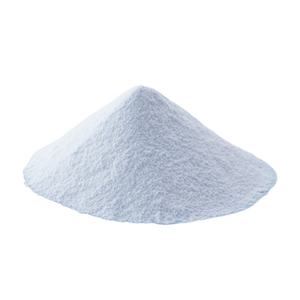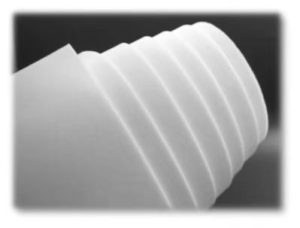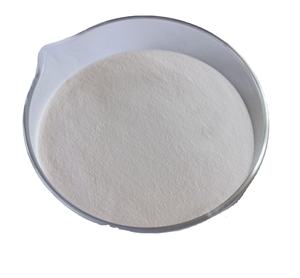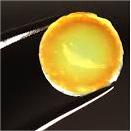Professional industry ceramic supplier, silicon nitride, silicon carbide, aluminum nitride and any other kinds of ceramics.
1.The Scourge of Thermal Degradation in Modern Industry
In the relentless landscape of industrial manufacturing, equipment overheating represents nothing less than a pernicious adversary that silently erodes productivity, escalates operational costs, and precipitates catastrophic system failures. This thermal management conundrum plagues everything from precision electronics to massive processing machinery, generating staggering annual losses that collectively amount to billions of dollars globally. Amidst this escalating challenge, an extraordinary material solution has emerged with the profound capability to fundamentally redefine thermal management paradigms: Aluminum Nitride (AlN) Ceramic Lining. This revolutionary material technology offers nothing short of a transformative breakthrough for industries besieged by the debilitating consequences of excessive heat accumulation. As operational intensities escalate and efficiency demands intensify, understanding the unparalleled thermal properties of Aluminum Nitride becomes not merely advantageous but absolutely imperative for any enterprise committed to operational excellence and competitive superiority.
The sheer versatility of Aluminum Nitride Ceramic Lining spans an astonishing spectrum of industrial applications, delivering exceptional performance precisely where conventional thermal management solutions falter. From the blistering thermal environments of semiconductor manufacturing to the corrosive, hightemperature conditions of chemical processing, AlN linings provide a comprehensive thermal defense that simultaneously enhances efficiency, extends equipment lifespan, and radically reduces maintenance requirements. This remarkable adaptability stems from Aluminum Nitride’s unique combination of extraordinary thermal conductivity, exceptional electrical insulation, and outstanding mechanical properties—characteristics we will explore in meticulous detail throughout this comprehensive examination. Join us as we illuminate how this advanced material technology is poised to become the cornerstone of nextgeneration industrial equipment, offering a definitive solution to one of manufacturing’s most persistent and costly challenges.
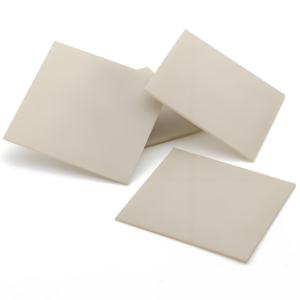
2.The Material Science Revolution: Decoding Aluminum Nitride’s Extraordinary Properties
2.1 Crystalline Architecture and Thermal Conductivity Prowess
The exceptional thermal performance of Aluminum Nitride originates from its fundamental crystalline structure—a densely packed wurtzite lattice comprising alternating aluminum and nitrogen atoms in a tetrahedral coordination geometry. This elegant atomic arrangement creates an efficient pathway for phonon transport, the primary heat conduction mechanism in ceramic materials, enabling Aluminum Nitride to achieve a remarkable thermal conductivity of approximately 170200 W/mK—surpassing most traditional ceramics by an order of magnitude and even rivaling certain metals. This extraordinary thermal transfer capability allows AlN linings to rapidly dissipate heat away from sensitive components and hightemperature zones, effectively preventing the dangerous heat accumulation that leads to performance degradation and premature failure in critical equipment.
The structural sophistication of Aluminum Nitride becomes particularly evident when contrasted with conventional thermal management materials. Unlike alumina ceramics, which typically exhibit thermal conductivity below 30 W/mK, or beryllia ceramics, which offer high conductivity but present serious toxicity concerns, AlN achieves an optimal balance of performance, safety, and reliability. Furthermore, Aluminum Nitride maintains its exceptional thermal properties across a breathtaking temperature range from cryogenic conditions to approximately 1400°C, ensuring consistent performance despite fluctuating operational environments. This thermal stability proves invaluable in applications involving repeated thermal cycling, where alternative materials would suffer from microcracking, delamination, or progressive degradation. The combination of superior intrinsic conductivity and exceptional thermal stability establishes Aluminum Nitride Ceramic Lining as the preeminent choice for applications where thermal management cannot be compromised.
2.2 Exceptional Electrical Insulation and Mechanical Resilience
Beyond its thermal management prowess, Aluminum Nitride delivers outstanding electrical insulation properties that make it uniquely suited for applications where thermal and electrical management must be addressed simultaneously. With a volume resistivity exceeding 10¹⁴ Ω·cm and a dielectric strength of approximately 1520 kV/mm, AlN effectively prevents current leakage and electrical breakdown even in highvoltage, hightemperature environments where conventional insulators would rapidly deteriorate. This dual functionality enables designers to simplify system architecture by eliminating separate thermal and electrical management components, resulting in more compact, reliable, and costeffective equipment designs.
The mechanical characteristics of Aluminum Nitride further enhance its suitability for demanding industrial applications. With a flexural strength typically ranging from 300 to 400 MPa and a Vickers hardness of approximately 1200, AlN linings offer formidable resistance to mechanical abrasion, particle erosion, and impact damage—common challenges in processing equipment handling abrasive slurries or particulate materials. Additionally, Aluminum Nitride exhibits a moderate thermal expansion coefficient of 4.55.5 × 10⁻⁶/°C, closely matching that of silicon and several important metallization materials, which minimizes thermal stress at critical interfaces during temperature fluctuations. This mechanical robustness, combined with exceptional thermal and electrical properties, creates a comprehensive performance profile that positions Aluminum Nitride Ceramic Lining as an unrivaled solution for the most demanding industrial environments.
3. Multifaceted Industrial Applications: AlN’s Transformative Impact
3.1 Revolutionizing Thermal Management in Electronics and Power Systems
In the electronics sector, where component densities continue to escalate while form factors shrink relentlessly, Aluminum Nitride Ceramic Lining has emerged as a critical enabling technology for nextgeneration thermal management solutions. Semiconductor manufacturing facilities increasingly utilize AlN linings in critical process equipment including chemical vapor deposition chambers, plasma etch systems, and wafer handling components, where maintaining precise thermal uniformity is essential for process control and yield optimization. The exceptional thermal conductivity of Aluminum Nitride ensures rapid heat dissipation from highpower RF components and heating elements, preventing thermal runaway while enabling higher power densities and improved process stability. This thermal management superiority directly translates to enhanced manufacturing precision, reduced downtime, and significant improvements in overall equipment effectiveness.
The power electronics industry similarly leverages the unparalleled properties of Aluminum Nitride to overcome persistent thermal limitations that have historically constrained performance and reliability. In highpower LED systems, AlN ceramic substrates and linings provide the essential thermal pathway that prevents luminance degradation and color shift by maintaining junction temperatures within optimal operating ranges. For electric vehicle power converters and motor drives, Aluminum Nitride linings in housing components and heat sinks enable dramatic thermal performance improvements that permit higher power densities while extending operational lifespan. The emerging widebandgap semiconductor devices based on silicon carbide and gallium nitride particularly benefit from AlN’s thermal properties, as these highfrequency, hightemperature components generate intense thermal fluxes that conventional materials cannot effectively manage. This widespread adoption across electronics applications underscores Aluminum Nitride’s pivotal role in enabling technological advancement across multiple industries.
3.2 Dominance in HighTemperature Processing and Industrial Furnace Applications
Within hightemperature industrial processing, Aluminum Nitride Ceramic Lining delivers transformative performance in applications where conventional refractories succumb to thermal degradation, chemical attack, or mechanical failure. In metallurgical heat treatment furnaces, AlN linings provide superior thermal uniformity while resisting reaction with molten metals and alloys, significantly extending service life compared to traditional oxidebased ceramics. The extraordinary thermal shock resistance of Aluminum Nitride proves particularly valuable in rapid thermal processing applications involving abrupt temperature changes that would cause most ceramic materials to fracture catastrophically. This thermal resilience enables faster processing cycles while eliminating the downtime associated with refractory maintenance and replacement.
The chemical processing industry benefits profoundly from Aluminum Nitride’s unique combination of exceptional corrosion resistance and thermal management capabilities. In pyrolysis reactors, cracking units, and other hightemperature chemical synthesis equipment, AlN linings maintain structural integrity while exposed to aggressive chemical environments that would rapidly degrade lesser materials. The nonwetting characteristics of Aluminum Nitride regarding most molten salts and metals further enhance its utility in electrolytic reduction cells, metal distillation systems, and semiconductor crystal growth apparatus. Additionally, Aluminum Nitride’s inherent resistance to attack by many corrosive gases including chlorine, hydrogen chloride, and sulfur compounds makes it invaluable in waste incineration systems, chemical vapor synthesis reactors, and other demanding applications where thermal and chemical challenges converge. This comprehensive performance across diverse hightemperature applications confirms Aluminum Nitride Ceramic Lining’s status as an indispensable material technology for industries pushing the boundaries of process intensity and efficiency.

4.Performance and Economic Advantages: The Compelling Value Proposition
4.1 Dramatically Extending Equipment Service Life and Reliability
The strategic implementation of Aluminum Nitride Ceramic Lining generates substantial economic benefits primarily through the dramatic extension of equipment service life across countless industrial applications. By providing a formidable thermal barrier that protects structural components from direct exposure to hightemperature environments, AlN linings effectively mitigate the primary degradation mechanisms—including oxidation, creep, thermal fatigue, and microstructural transformation—that gradually compromise equipment integrity and ultimately precipitate failure. This profound protective function translates directly into extended maintenance intervals, reduced component replacement frequency, and decreased system downtime—all contributing to significantly lower total operating costs over equipment lifetime. For capitalintensive industries where unplanned shutdowns carry devastating financial consequences, this reliability enhancement represents not merely incremental improvement but a transformative operational advantage that strengthens competitive positioning.
The economic narrative becomes even more compelling when considering Aluminum Nitride’s ability to enable higher operating temperatures that improve process efficiency and productivity. Many industrial processes—particularly in metallurgical, ceramic, and chemical sectors—achieve significant efficiency gains at elevated temperatures but have historically been constrained by material limitations. Aluminum Nitride Ceramic Lining effectively removes these thermal barriers, permitting operation at temperatures that would rapidly degrade conventional refractory materials. This temperature capability expansion allows processes to achieve faster reaction rates, improved product purity, and reduced energy consumption per unit output—benefits that directly enhance profitability while simultaneously reducing environmental impact through lower specific energy consumption. This combination of extended equipment lifespan and enhanced process efficiency creates a powerful economic proposition that frequently delivers complete return on investment within remarkably short timeframes.
4.2 Boosting Energy Efficiency and Environmental Performance
Beyond equipment protection, Aluminum Nitride Ceramic Lining delivers substantial economic value through enhanced energy efficiency across thermal processing systems. The exceptional thermal conductivity of AlN enables more uniform temperature distribution within process equipment, eliminating hot spots that contribute to excessive energy consumption while compromising product quality. This thermal uniformity translates directly to reduced energy requirements for maintaining target process temperatures, as systems no longer require overcompensation to ensure minimum temperatures are achieved throughout the working volume. For continuous industrial processes operating at elevated temperatures, these incremental efficiency gains aggregate into substantial financial savings and reduced environmental impact through decreased energy demand.
The environmental advantages of Aluminum Nitride Ceramic Lining further enhance its value proposition in an era of escalating regulatory pressure and sustainability expectations. By enabling higher thermal efficiencies, AlN linings directly reduce greenhouse gas emissions associated with energy production—a consideration increasingly important in corporate environmental reporting and regulatory compliance. Additionally, the exceptional durability and corrosion resistance of Aluminum Nitride minimize the generation of waste materials associated with frequent refractory replacement, while its composition avoids the toxicity concerns associated with beryllia ceramics or heavymetalbased alternatives. Furthermore, Aluminum Nitride’s electrical insulation properties at elevated temperatures facilitate the implementation of electric heating systems that can utilize renewable energy sources, providing a pathway toward decarbonization for hightemperature industrial processes that have historically relied on fossil fuel combustion. This combination of operational efficiency, environmental compatibility, and regulatory advantage creates a compelling strategic rationale for adopting Aluminum Nitride technology that extends far beyond immediate economic calculations.

5.Implementation Considerations and Future Trajectory
5.1 Advanced Fabrication Techniques and Integration Methodologies
The successful implementation of Aluminum Nitride Ceramic Lining in industrial equipment hinges upon sophisticated fabrication and integration approaches that optimize performance while ensuring longterm reliability. Modern AlN components are typically manufactured using advanced powder processing techniques that carefully control particle size distribution, purity, and sintering additives to achieve the desired combination of thermal, mechanical, and electrical properties. Subsequent machining operations employing diamondgrit tools create precise dimensional configurations that ensure proper fit within complex equipment geometries. The critical integration phase frequently employs specialized bonding techniques—including active metal brazing, diffusion bonding, or advanced adhesive systems—that create durable, thermally efficient interfaces between the AlN lining and supporting structural elements. These sophisticated joining methodologies must accommodate the thermal expansion characteristics of both materials while maintaining structural integrity across the equipment’s entire operational temperature range.
The design optimization process for Aluminum Nitride Ceramic Lining requires careful consideration of numerous applicationspecific factors including thermal gradients, mechanical loading conditions, chemical environment, and thermal cycling parameters. Finite element analysis simulations enable precise modeling of heat transfer characteristics and thermal stress distributions, allowing engineers to optimize lining thickness, attachment strategies, and interface designs before committing to fabrication. This analytical approach proves particularly valuable for complex geometries or applications involving severe thermal transients that could generate destructive stress concentrations if improperly managed. Additionally, comprehensive prototype testing under simulated operational conditions provides empirical validation of performance expectations while identifying potential failure modes before fullscale implementation. This methodical design and validation framework ensures that Aluminum Nitride Ceramic Lining delivers its full performance potential while maintaining reliability throughout its service life.
5.2 Emerging Applications and Material Development Frontiers
The versatile capabilities of Aluminum Nitride are finding expression in increasingly diverse applications beyond traditional hightemperature processing, particularly in advanced energy systems and cuttingedge manufacturing technologies. In concentrated solar power installations, AlN components facilitate higher operating temperatures in heat transfer systems and thermal energy storage units, directly improving conversion efficiency while reducing electricity generation costs. The emerging hydrogen economy leverages Aluminum Nitride’s stability in hydrogen atmospheres at elevated temperatures for electrolyzer components and fuel cell systems where alternative materials suffer from degradation or performance limitations. This expanding application horizon demonstrates Aluminum Nitride’s growing relevance in sustainable energy technologies that represent critical pathways toward global decarbonization objectives.
The future development trajectory of Aluminum Nitride technology points toward continued performance enhancements through material engineering innovations and novel composite architectures. Researchers are exploring nanostructuring approaches that further increase thermal conductivity by optimizing phonon transport pathways while maintaining excellent electrical insulation properties. The development of Aluminum Nitride composite materials incorporating secondary phases offers pathways to tailored thermal expansion characteristics or enhanced mechanical properties for specialized applications. Additionally, advanced coating technologies based on Aluminum Nitride are emerging for protecting temperaturesensitive substrates in applications where full ceramic lining may be impractical or economically unjustified. This continuous innovation cycle ensures that Aluminum Nitride Ceramic Lining will remain at the forefront of thermal management technology, providing evermore sophisticated solutions to the escalating thermal challenges confronting modern industry.
6.Embracing the Aluminum Nitride Revolution in Thermal Management
The overwhelming technical evidence from both laboratory research and industrial application overwhelmingly confirms that Aluminum Nitride Ceramic Lining represents a transformative solution to the pervasive challenge of equipment overheating across countless sectors. Its unique combination of extraordinary thermal conductivity, excellent electrical insulation, outstanding mechanical properties, and exceptional chemical resistance creates a comprehensive performance profile that alternative materials struggle to match across the broad spectrum of industrial applications. The continuously expanding implementation of AlN technology across industries ranging from semiconductor manufacturing to chemical processing to power electronics underscores its growing recognition as a critical enabling technology for nextgeneration industrial equipment.
The economic imperative for adopting Aluminum Nitride Ceramic Lining grows increasingly compelling as industries face intensifying pressure to enhance efficiency, reduce environmental impact, and maximize operational reliability. With demonstrated capabilities to extend equipment service life, boost energy efficiency, enable higher process intensities, and reduce maintenance requirements, AlN technology consistently delivers compelling return on investment while futureproofing operations against escalating thermal challenges. As you evaluate strategies to overcome thermal limitations in your equipment and processes, we invite you to explore how Aluminum Nitride Ceramic Lining can be customized to address your specific operational challenges. Contact our technical team today to discover how the remarkable properties of this extraordinary material technology can be leveraged to solve your most persistent overheating problems and unlock new levels of operational performance and reliability.
Supplier
Tanki New Materials Co.Ltd. focus on the research and development, production and sales of ceramic products, serving the electronics, ceramics, chemical and other industries. Since its establishment in 2015, the company has been committed to providing customers with the best products and services, and has become a leader in the industry through continuous technological innovation and strict quality management.
Our products includes but not limited to Aerogel, Aluminum Nitride, Aluminum Oxide, Boron Carbide, Boron Nitride, Ceramic Crucible, Ceramic Fiber, Quartz Product, Refractory Material, Silicon Carbide, Silicon Nitride, ect. If you are interested in Aluminum Nitride Ceramic Lining, please feel free to contact us.
Tags:aluminum nitride,aluminium nitride

